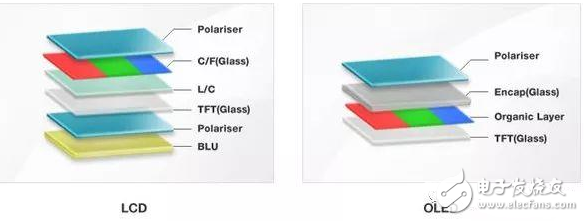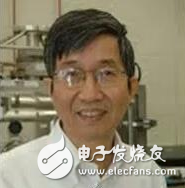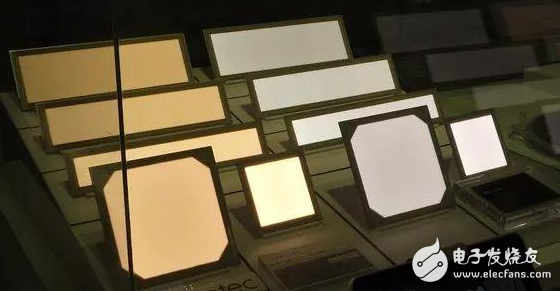LED screens are considered to be the most space-expanding display technology available today, but many people have misunderstood it, especially on burn-in issues. Still, there are still many notebooks that want to try to use OLED screens. Now more and more notebook manufacturers are trying to use OLED screens. As a new type of screen, OLEDs have the advantages of no backlight, self-illumination, larger viewing angle, richer colors, more energy saving, flexible bending and so on. . However, the application in notebooks is not so much. I heard more reports such as OLED burn-in. What are the advantages and disadvantages of this type of screen, and it is not reliable? And its past and present. This article may help you. LED screens of past and present Organic Light-EmitTIng Diode (English: Organic Light-EmitTIng Diode, abbreviation: OLED), also known as Organic Electroluminescence Display (English: Organic Electroluminescence Display, OELD), organic light-emitting semiconductor, and thin film transistor liquid crystal display are different types of products, The former has the advantages of self-illumination, wide viewing angle, high contrast, low power consumption, high reaction rate, full colorization and simple process, but it is relatively large in terms of price, technology selectivity, life, resolution and color reproduction. Can not rival the latter. Organic light-emitting diode displays can be divided into monochrome, colorful and full-color types. Among them, full-color production technology is the most difficult. Organic light-emitting diode displays can be divided into passive matrix (PM OLED) and active (depending on the driving mode). AcTIve Matrix, AMOLED). Organic light-emitting diodes can be easily classified into organic light-emitting diodes and polymer light-emit TIng diodes (PLEDs), and mature products have been developed. The main advantage of polymer light-emitting diodes relative to organic light-emitting diodes is their flexible large-area display. However, due to product life issues, the current products on the market still use organic light-emitting diodes as the main application. The first observation of electroluminescence in organic materials was in the 1950s André Bernanose and his colleagues at Nanxun University in France. In 1960, MarTIn Pope and his colleagues at New York University developed ohms in contact with organic crystals. Ohmic dark-injecting electrode. They further describe the energy requirements required for hole injection electrode contacts and electron injection electrode contacts. These are the basis for charge injection in all modern OLED devices. For the first time, Pope's team observed the direct electroluminescence of a single pure tantalum crystal and a tetraphenylene-doped germanium crystal under vacuum using a small piece of silver electrode at 400 volts, and proposed field-accelerated electron excitation. The mechanism of molecular fluorescence. Ēn (Anthracene) 蒽, commonly known as green oil brain, a condensed aromatic hydrocarbon, molecular formula C14H10, molecular weight of 178.22. Colorless prismatic crystal with blue-violet fluorescence, sublimation and toxic. Do not dissolve in water, slightly soluble in ethanol, soluble in ether, benzene, toluene, chloroform, acetone, carbon tetrachloride. Martin Pope Martin Pope's team reported in 1965 that in the absence of an external electric field, the electroluminescence in the germanium crystal is caused by the recombination of the heated electrons and holes, and the energy level of the energy in the germanium crystal is high. In the energy level of an exciton (exciton, electron excited in the crystal structure). Also in 1965, W. Helfrich and WG Schneider of the National Research Council of Canada first realized dual injection composite electroluminescence in a germanium single crystal using hole and electron injecting electrodes. In the same year, Dow Chemical researchers obtained a related patent by proposing a high-voltage alternating current driving electrically insulating one-millimeter molten phosphor thin layer to prepare an electroluminescent element (the element consists of ground tantalum powder, tetracene, graphite). Powder composition). The first electroluminescence observation of polymer films was Roger Partridge's National Physics Laboratory in the UK. Their results were patented in 1975 and published in 1983. Finally, Dr. Deng Qingyun, who joined the Kodak Rochester Laboratory in 1975 and worked on organic light-emitting diode research, discovered OLEDs in an accident. One night in 1979, on the way home, he suddenly remembered that something was forgotten in the laboratory. After returning to the laboratory, he found that an experimental organic battery in the dark was shining, thus starting to emit organic light. Diode research. In 1987, Deng Qingyun and colleague Steven successfully used a two-layer organic structure similar to a semiconductor PN junction to make a low-voltage, high-efficiency light emitter for the first time. It laid the foundation for Kodak's production of organic light-emitting diode displays. This is known as the father of OLED. OLED English name is Organic Light-Emitting Diode, abbreviation: OLED, Chinese name "organic light-emitting diode" is named by Deng Qingyun. Dr. Deng Qingyun Dr. Deng Qingyun, born in Hong Kong, received a BS degree in chemistry from the University of British Columbia and a Ph.D. in physical chemistry from Cornell University in 1975. In 1990, the laboratory in Cambridge, England, also successfully developed a polymer organic light-emitting element. The discovery of CDT (Cambridge Display Technology), a Cambridge-based display technology company in 1992, led to the development of organic light-emitting diodes in a completely different way from Kodak. Can be widely used in various fields, currently more OLEDs are used in AMOLED technology. OLED screen prototype The biggest difference between LCD and OLED is that the pixels of LCD do not emit light, but the pixels of OLED are self-illuminating and do not require an external light source. It is generally believed that OLEDs are technically more advanced than LCDs. LED Flexible Light Strip Kindwin Technology (H.K.) Limited , https://www.szktlled.com



